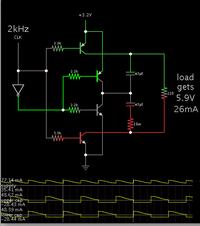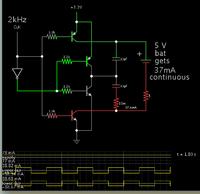Artlav
Full Member level 2
Hello.
I want to be able to charge a LiPo battery from a solar cell.
The cell gives out 3.2V and 80mA.
How is this solved normally?
What i can think of is to use something like MAX660 charge pump chip to double the voltage, then feed that into some sort of regular lipo charger chip, like MAX1555.
Would that work?
The cell can give up to 4.2V open circuit in full sun, that means 8.4V at the 7V max rated MAX1555 - is that a problem, if yes is it easily solvable?
Are there better chips (not too rare or expensive) that would do the whole, or some parts better?
I want to be able to charge a LiPo battery from a solar cell.
The cell gives out 3.2V and 80mA.
How is this solved normally?
What i can think of is to use something like MAX660 charge pump chip to double the voltage, then feed that into some sort of regular lipo charger chip, like MAX1555.
Would that work?
The cell can give up to 4.2V open circuit in full sun, that means 8.4V at the 7V max rated MAX1555 - is that a problem, if yes is it easily solvable?
Are there better chips (not too rare or expensive) that would do the whole, or some parts better?

